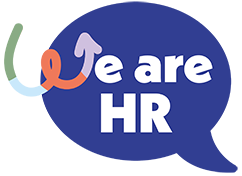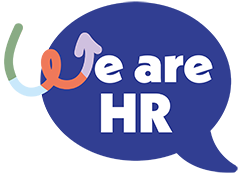Table Of Contents
- The Ultimate Checklist for Employee Wellbeing Strategy
- 1. Know Your People: Building a Data-Driven Foundation
- 2. Align with Business Goals: Weaving Wellbeing into Your Strategy
- 3. Listen to Your Employees: Giving Voice to Their Needs
- 4. Embrace a Holistic Approach: Addressing All Dimensions of Wellbeing
- 5. Foster Open Communication: Building a Culture of Trust
- 6. Promote Healthy Habits: Encouraging a Well-Rounded Lifestyle
- 7. Multi-Channel Communication is Key: Reaching a Multigenerational Workforce
- 8. Empower Your Employees: Providing Tools for Self-Management
- 9. Measurement: The Balancing Act: Tracking Progress and Impact
- 10. Learn and Adapt: Embracing Continuous Improvement
- Conclusion: Investing in Your People: A Win-Win Situation
The modern workplace landscape recognises that employee wellbeing goes beyond just a paycheck. It encompasses physical, mental, and financial health, all of which are intricately linked and impact overall well-being. A happy, healthy workforce is a productive workforce, leading to increased engagement, retention, and success for your organisation.
1. Know Your People: Building a Data-Driven Foundation
Understanding your workforce is crucial for crafting an effective wellbeing strategy. Gather demographic data on age, location, gender, salary ranges, and industry representation. Analyse absence, sickness, accident, and turnover data to identify potential concerns. Consider using people analytics tools to gain deeper insights into workforce trends and potential challenges.
For example, a high rate of absenteeism among younger employees could indicate burnout or a lack of work-life balance. Conversely, a high turnover rate among senior employees might suggest a need for upskilling opportunities or career development programmes.
2. Align with Business Goals: Weaving Wellbeing into Your Strategy
Why are you developing a wellbeing strategy? What are your desired outcomes? Do you aim to improve employee retention, boost productivity, or attract top talent in a competitive market? Defining clear goals ensures your strategy aligns with broader business objectives.
Get key stakeholders involved from the outset. This could include leadership from HR, finance, operations, and even mental health professionals. Their input will ensure the strategy is not only well-rounded but also has the necessary support and resources to succeed in the long term.
3. Listen to Your Employees: Giving Voice to Their Needs
Feedback is essential for crafting a wellbeing strategy that resonates with your workforce. Conduct surveys with clear, concise questions that address physical, mental, and financial wellbeing concerns. Utilise focus groups with diverse employee samples (age, role, and location) to gain deeper qualitative insights. Consider holding open forums or town halls where employees can voice their needs and concerns directly.
By actively listening to your employees, you can tailor your strategy to address their specific challenges. For instance, if a common concern is financial stress, offering financial literacy workshops, debt management programmes, or access to financial advisors can be highly beneficial.
4. Embrace a Holistic Approach: Addressing All Dimensions of Wellbeing
A comprehensive wellness strategy goes beyond offering a gym membership or a free fruit basket. It requires a multi-faceted approach that addresses all dimensions of employee well-being:
- Physical Wellbeing: Provide resources and support for employees to maintain healthy habits. This could include on-site fitness centres, healthy food options in cafeterias, ergonomic workstations, subsidised gym memberships, and health screenings. Offer opportunities for physical activity during the workday, such as lunchtime yoga sessions or walking groups.
- Mental Wellbeing: Recognise the importance of mental health and create a supportive environment. Offer stress management workshops, mindfulness training, and access to Employee Assistance Programmes (EAPs) with confidential counselling services. Organise mental health awareness campaigns to combat stigma and encourage help-seeking behaviour.
- Mental Wellbeing: Recognise the importance of mental health and create a supportive environment. Offer stress management workshops, mindfulness training, and access to Employee Assistance Programmes (EAPs) with confidential counselling services. Organise mental health awareness campaigns to combat stigma and encourage help-seeking behaviour.
- Financial Wellbeing: Acknowledge the impact of financial stress on overall well-being. Offer financial literacy workshops on topics like budgeting, debt management, and saving for retirement. Consider providing student loan repayment assistance or access to financial advisors who can offer personalised financial planning guidance.
5. Foster Open Communication: Building a Culture of Trust
Creating a culture of openness and support is vital for a successful wellbeing strategy. Encourage employees to discuss their well-being concerns without fear of judgment. Consider implementing anonymous feedback systems or online forums where employees can share their experiences and find support from peers.
Senior leadership can champion this culture by openly discussing mental health challenges and the importance of self-care. Sharing personal stories can normalise seeking help and destigmatize mental health issues.
6. Promote Healthy Habits: Encouraging a Well-Rounded Lifestyle
Don’t just tell employees about healthy habits; actively encourage them! Offer healthy snacks in vending machines and cafeterias. Organise walking groups or lunchtime yoga sessions. Partner with local gyms or fitness centres to offer discounted memberships.
Promote flexible work arrangements to help employees achieve a healthy work-life balance. This could include telecommuting options, compressed workweeks, or flexible start and end times. Encourage employees to take breaks throughout the day and to use their paid time off.
7. Multi-Channel Communication is Key: Reaching a Multigenerational Workforce
Reaching a multigenerational workforce requires a multi-pronged communication approach. Utilise online platforms like the company intranet or wellness portal to share information and resources. Leverage internal communication channels like newsletters and team meetings to keep employees informed.
Utilise traditional media like posters or flyers in common areas to raise awareness of well-being initiatives. Consider even including information in payslip messaging to ensure everyone receives the message.
8. Empower Your Employees: Providing Tools for Self-Management
A successful wellbeing strategy doesn’t just provide resources; it empowers employees to take control of their own well-being. Offer educational workshops on topics like stress management, healthy eating, sleep hygiene, and financial planning.
Provide access to online resources and mobile apps that employees can use to track their health and wellness goals. Encourage participation in wellness challenges or competitions that promote healthy habits and team building.
9. Measurement: The Balancing Act: Tracking Progress and Impact
Measuring the success of your wellness strategy can be challenging. It’s not just about tracking participation rates in workshops or the number of gym memberships offered. However, measuring progress is crucial for gauging the effectiveness of your initiatives and demonstrating return on investment (ROI).
Track hard metrics like absenteeism rates, healthcare costs, and employee turnover. These can indicate improvements in overall employee health and potentially reduced costs for the organisation.
However, don’t neglect “softer” metrics. Conduct follow-up surveys or focus groups to assess employee sentiment towards the wellbeing programme and its impact on their well-being. Track employee engagement scores and monitor changes in productivity levels.
By combining these quantitative and qualitative measures, you can gain a holistic understanding of the programme’s impact and identify areas for improvement.
10. Learn and Adapt: Embracing Continuous Improvement
Building a successful wellbeing strategy is an ongoing process. Be open to feedback and adapt your strategy accordingly. If a programme isn’t working as planned, analyse the reasons behind its shortcomings. Was it a lack of awareness? Was the programme design itself flawed?
Refine your approach based on your findings and be prepared to experiment with new initiatives. Regularly review and update your strategy as your workforce and business needs evolve.
Conclusion: Investing in Your People: A Win-Win Situation
By prioritising employee well-being, you’re not just doing the right thing for your employees; you’re also making a smart business decision.
Investing in employee well-being is an investment in the future of your organization. By creating a thriving workplace that supports the physical, mental, and financial health of your employees, you can unlock their full potential and achieve sustainable success.


